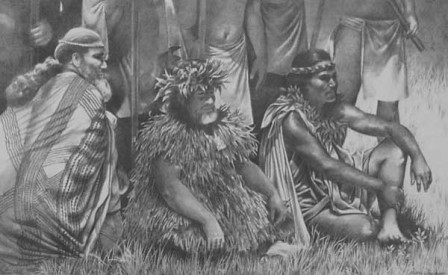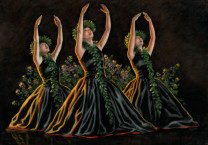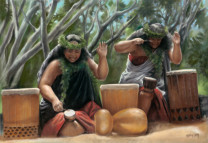Product Description
*Limited Edition Offset Lithographs of original graphite drawings printed on cream archival stock. (Shipped flat) (*Limited edition of 500, plus some artist proofs)
7.75″ h x 12.75″ w
The three men in the image “The Three Kahunas” are teachers of various arts. Hale “Harry” Makua, to the far left, is a spiritual kahuna. Sam Kai, in the center, is a teacher of history, as well as the warrior arts. Kia, the man to the right, is a man of agriculture, one of the best known growers of Kalo (poi) in Waipio Valley, where he still cultivates the old Hawaiian way.
All three men, respected for their great knowledge of Hawaiian culture, were part of the 200th Anniversary of Pu’ukohola Heiau, a temple built by King Kamehameha.
The Hawaiian word “kahuna” means teacher, or master craftsman, a title not given lightly to anyone. When a child was born in old Hawaii, they were watched to see what aptitudes or interests developed in their early years. Sometimes it was decided that the child was born into the “wrong” family, one that was not capable to deal either with the child or it’s aptitudes and that child would become “hanai” to another family or person – a form of adoption and in some cases a form of apprenticeship. These children would leave their birth families and join another family, while retaining all rights and relationships with both.
If you can imagine being able to send your teenager, who has begun to argue with you, to live with someone else who is going to teach them a skill or craft that the child was interested in, with no bad feelings about it… and no tuition…
It takes many years of study, sometimes a lifetime, before a teacher might consider their student to be ready to “iniki” or graduate. In some cases, a student never is given the title of “Kahuna”, or license to teach.




